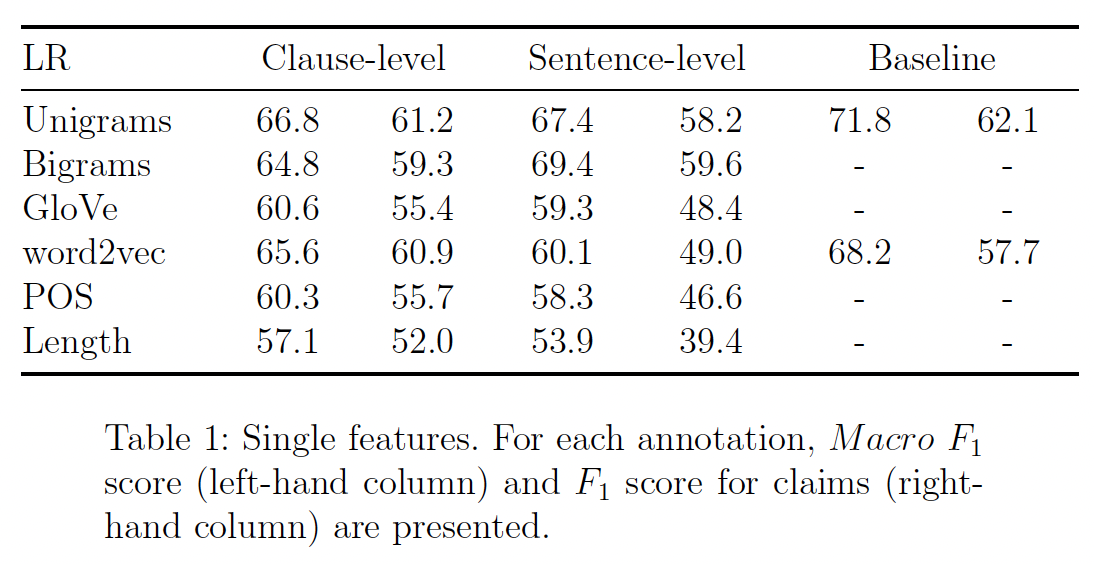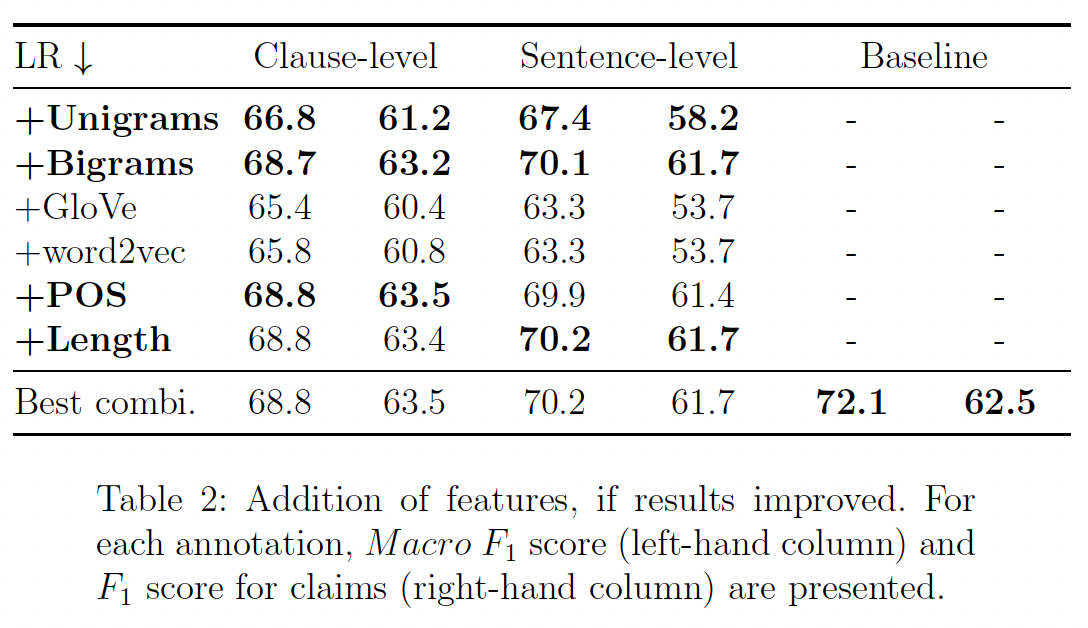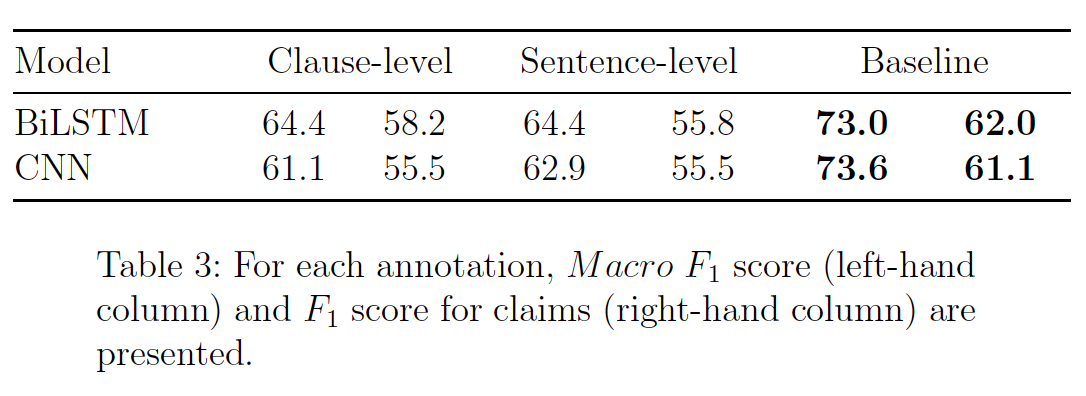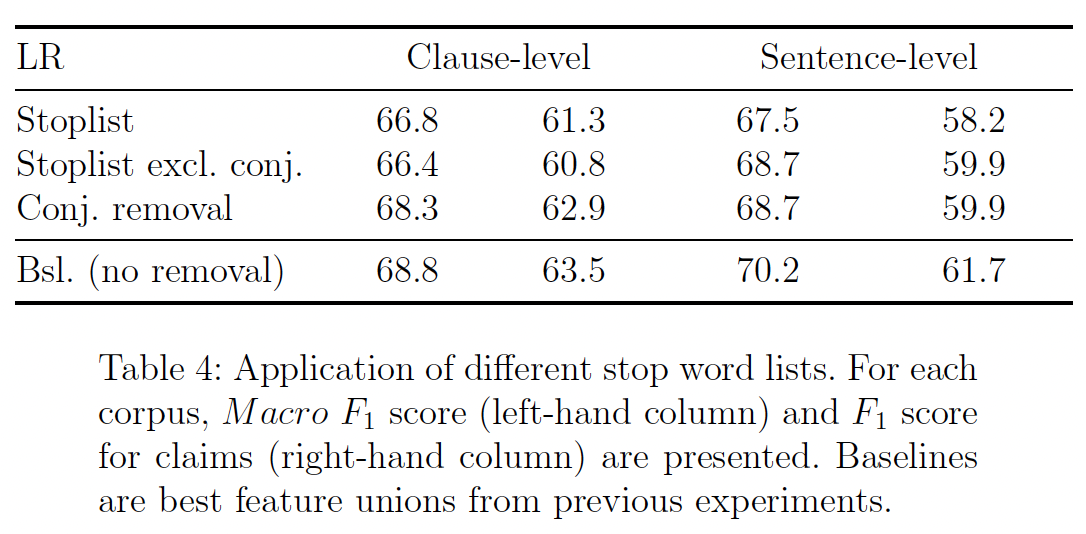This project presents a partial reproduction of "What is the Essence of a Claim? Cross-Domain Claim Identification." by Daxenberger et al. (2017). Unlike Daxenberger et al. (2017), whose goal is cross-domain classification, the focus is on an in-depth classification of claims from a single corpus, based on persuasive essays by Stab and Gurevych (2017a). Multiple classification pipelines are employed at the clause and sentence-level. Daxenberger's et al. (2017) baseline is still trailed by 1.7 with the best feature selection in this project's experiments. In addition, a different hyperparameter choice for BiLSTM and CNN classifiers could not improve the 2017 results. Overall it turns out that classification at sentence-level is more fruitful. Additionally, the project investigates whether conjunctions and conjunctive adverbs play a distinctive role in automatically detecting claims, as they are often important signifiers for argumentative relations.
This repository contains the code for the project's experiments.
The pipelines can be found in their respective notebooks:
- feature_learning.ipynb
- deep_learning.ipynb
This code and documentation are published for research purposes. License: MIT.
The corpus is based on the Argument Annotated Essays (version 2) by Stab and Gurevych (2017). At clause-level, it contains an annotated set of 6089 statements that were written by students upon prompts, as part of 402 persuasive essays. These statements are divided into three groups: 1) Major Claim, 2) Claim, 3) Premise. Put together, the corpus contains 2257 claims and 3832 non-claims. At sentence level, the same corpus modified by Daxenberger et al. (2017) contains 7051 sentences where 2093 are annotated as claim and 4958 as non-claims.
The corpora need to be downloaded manually and saved to /data.
This project uses poetry for managing dependencies. To install necessary packages for running the Jupyter Notebook, please use:
poetry install
The feature based models use two types of pretrained embeddings: GloVe and word2vec. As these are relatively large files, they need to be added manually to /embeddings.
As this paper follows Daxenberger et al. (2017), two groups of classifier models are used: 1) Logistic Regression with hand-selected features, 2) two neural networks: one BiLSTM network and one CNN. The instances from the corpora are downsampled to have equal set sizes for each target.
-
Johannes Daxenberger, Steffen Eger, Ivan Habernal, Christian Stab, and Iryna Gurevych. 2017. What is the Essence of a Claim? Cross-Domain Claim Identification. In Proceedings of the 2017 Conference on Empirical Methods in Natural Language Processing, pages 2055–2066, Copenhagen, Denmark. Association for Computational Linguistics.
-
Christian Stab and Iryna Gurevych. 2017. Argument Annotated Essays (version 2). https://tudatalib.ulb.tu-darmstadt.de/handle/tudatalib/2422. Last accessed 23 December 2023.



